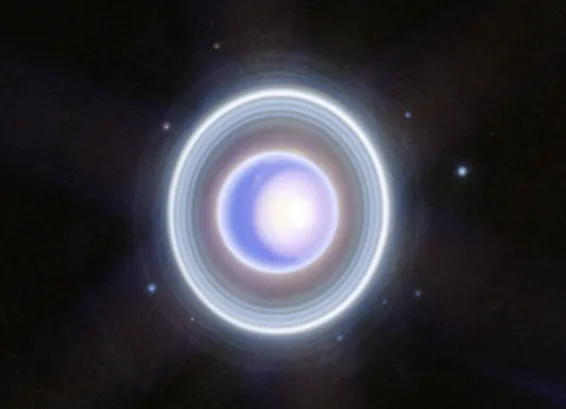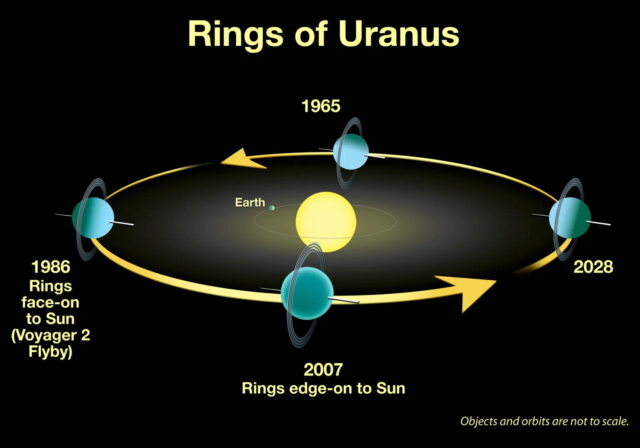Uranus, situated between Saturn and Neptune, remains one of the least understood planets in our Solar System. Recent analysis of two decades of data from NASA’s Hubble Space Telescope has led a research team from the University of Arizona and various institutions to unveil new details regarding the planet’s atmospheric composition and dynamics.
While much about Uranus is still enigmatic, some basic facts are known: its primary constituents are water and ammonia ice, with a diameter of approximately 51,000 kilometers—four times that of Earth—and a mass about 15 times greater than our planet’s. Moreover, Uranus is encircled by 13 rings and has 28 known moons.
The only mission to explore Uranus occurred in January 1986 when NASA’s Voyager 2 spacecraft conducted a flyby during its quest to study the outer planets.
Credit:
NASA/JPL
The recent findings indicate that Uranus’ atmosphere consists primarily of hydrogen and helium, along with traces of methane, water, and ammonia, as revealed by Hubble observations from 2002 to 2022. The planet’s striking pale blue-green hue is attributed to methane, which absorbs red wavelengths of sunlight.
Credit:
NASA/ESA/CSA/STSCI
The study has also offered insights into the seasonal dynamics of Uranus. Unlike most other planets, Uranus has an axial tilt that nearly aligns with its orbital plane, giving it a unique rotational orientation described as “overturned.” This unusual positioning is believed to have originated from a significant impact with an Earth-sized object in the distant past.
Credit:
NASA/ESA/J. Feild (STSCI)
With an orbital period of about 84 years, Uranus experiences extensive seasons. For an observer on the planet’s surface, daylight extends for approximately 42 Earth years, alternating with an equal duration of darkness across its seasons. This study dedicated two decades to observing and understanding these seasonal patterns.








